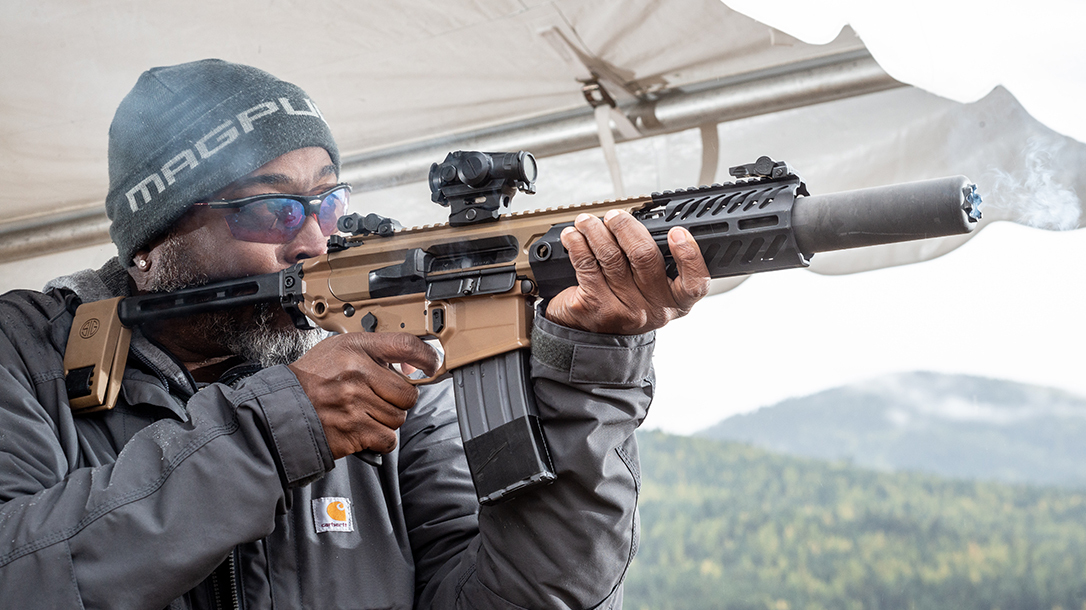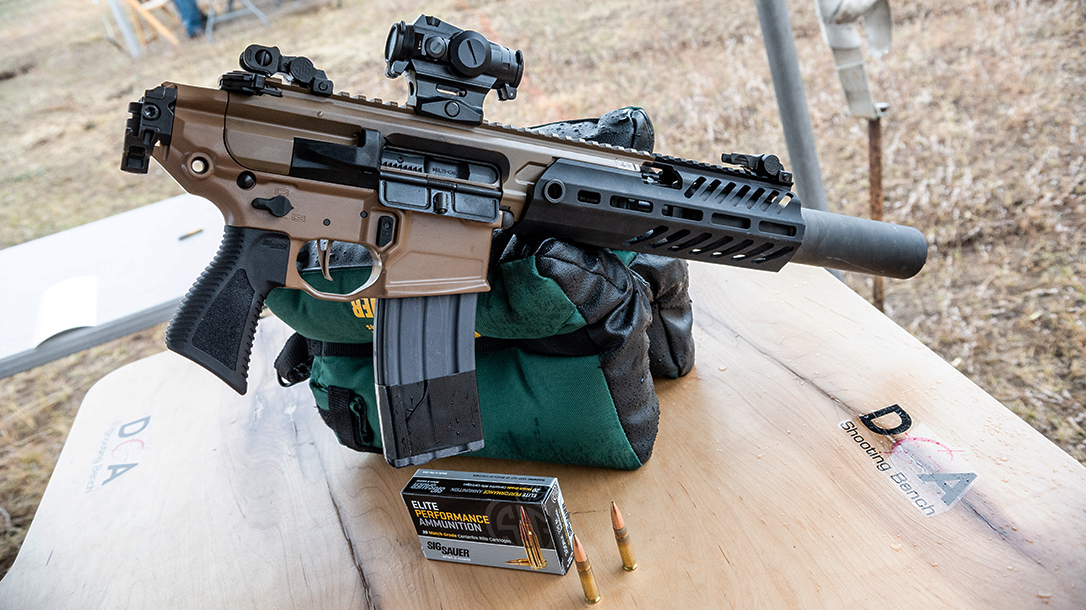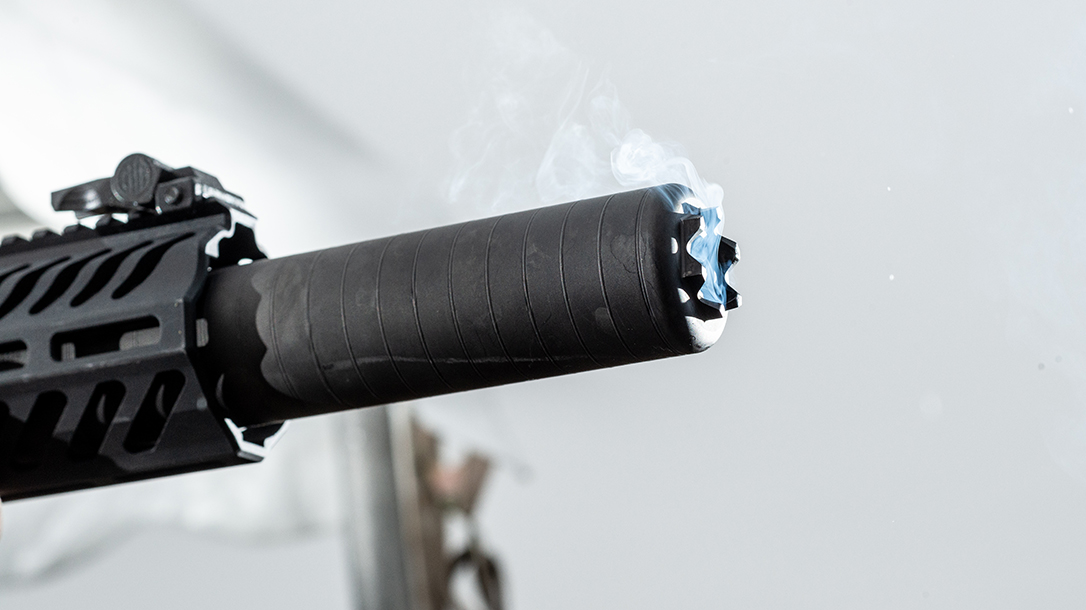SIG Sauer has exploded with innovative products over the last several years. So when I attended the 2018 Athlon Outdoors Rendezvous in Montana and got to check out one of its latest additions to the MCX family, I was pretty excited to say the least. SIG first introduced the MCX in 2015 as a short-stroke-piston-driven carbine, and the newest addition to the family is the SIG MCX Canebrake pistol.
Some of you may already know of the East Coast rattlesnake called the canebrake. But isn’t there already an MCX named for a rattlesnake? Yep, the Rattler—a 300 Blackout variant with a 5.5-inch barrel and a side-folding buttstock. The Canebrake is similar, but SIG threw in a few new bells and whistles that left me and other contributors thoroughly impressed.
Advertisement — Continue Reading Below
Striking Features
First and foremost, SIG changed the handguard so a sound suppressor could slide in under it. Hence the “SD,” or suppressor diameter, part of the forend’s name: PDW M-LOK SD. This leaves none of the barrel or gas piston operating system exposed. There are, of course, several M-LOK slots along the sides and bottom for accessories, along with a full-length top rail.
The cold-hammer-forged barrel is still 5.5 inches long like the MCX Rattler’s, but there is a lot more real estate for your support hand and accessories. The Canebrake also ships with an “inert trainer,” which is just a fancy way of saying a faux suppressor.
But Wait, There’s More
The MCX Canebrake also comes with a SIG MATCHLITE Duo Coyote Tan Flat Blade Trigger, which is a nice touch. I asked SIG’s Mike Joslin if other AR-style triggers could be dropped into the Canebrake. He said “yes and no.” Some aftermarket triggers will fit, but they need to be ruggedized. The short barrel and short-stroke piston put a lot of stress on the trigger, and most AR triggers are simply not up to the task long-term. The MCX also uses a firing pin lock (FPL) allowing for a non-free floating firing pin. The FPL is actuated by the hammer. If the hammer does not interact with the FPL, the firing pin remains locked.
Advertisement — Continue Reading Below
Any AR-style pistol grip can be installed, but the model that comes on the SIG MCX Canebrake is specially cut to aid in concealability under a jacket or coat. That said, the grip is still very ergonomic, too, and I had no problems getting on target at the range.
Since this is a pistol, SIG has included a side-folding Pivoting Contour Brace (PCB) at the rear of the upper receiver. This brace was made specifically for the MCX/MPX series and has the unique ability to pivot so the shooter can still see the sights without having to hold the gun horizontally. The gun can also still be fired with the brace folded to the side of the receivers.
And speaking of the receivers, both are coated in a gorgeous Cerakote finish that will help the new 300 Blackout pistol blend in—or stand out—depending on your environment.
Advertisement — Continue Reading Below
On the Range With the SIG MCX Canebrake
At the Athlon Outdoors Rendezvous, the prototype MCX Canebrake wore one of SIG’s direct-thread SRD762Ti suppressors as well as a ROMEO4T sight and was loaded with plenty of subsonic 220-grain OTM ammo. So how did it shoot? It was quieter than a suppressed .22. Really. Closing the bolt on an empty chamber was louder than firing a round. And I would also compare the recoil to that of a .22. Shooting the MCX Canebrake was ridiculously smooth and easy. In fact, it was so popular that I had to keep coming back for “seconds” with the gun.
In short, the new Canebrake had every shooter at the Rendezvous grinning from ear and ear, and we’ll have more in-depth reviews coming in future magazines.
For more information, please visit SigSauer.com.
Advertisement — Continue Reading Below

























